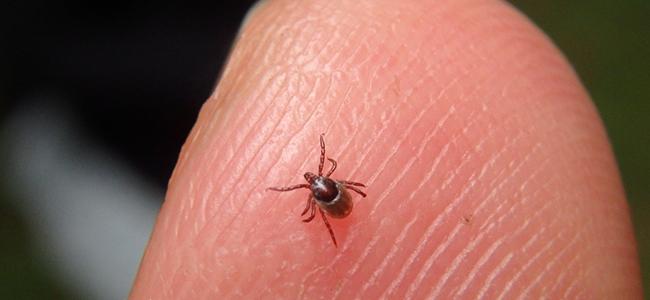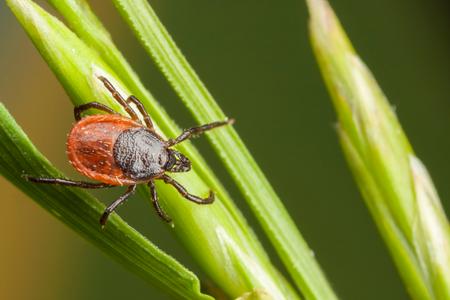
The Best Tick Control For Maryland Properties
10/01/2021
In Maryland, we have some of the most enjoyable weather (for most of the year) for playing out in the yard and enjoying time with our pets. Unfortu...
READ MORE >

Ticks are considered to be some of the most dangerous arachnids around. Not only are they famous for biting people, pets, and wildlife creatures, but they are considered to be the most famous vectors of the dreaded Lyme Disease.
Here in the Maryland area, blacklegged ticks are known to be the most common vectors of Lyme Disease. Sometimes called deer ticks, these small arachnids are best identified by the following features:
It is important to note that deer ticks are vectors for Lyme disease and not its original cause. In other words, not all deer ticks carry Lyme Disease, but many of them do. The percentage of ticks that carry Lyme Disease fluctuates along with their human population. In some areas of the world, less than 1% of ticks are disease vectors. In other parts of the United States, that number could be as much as 50%. Do adequate research for your living area to determine the Lyme Disease Risk.
Deer ticks find potential hosts in a myriad of ways. They exhibit what is known as ‘questing’ behavior, climbing out to the edges of trees, grasses, and shrubs to wave their arms around. At some point, a human, pet, or wildlife creature may pass close enough for the tick to latch on. This provides the pest with a perfect opportunity to bite and feed.
Although it is quite variable, tick bites often take on these characteristics:
Raised, red incision marks
Red ‘bulls' eye’ rings around the bite
Swelling or general histamine reactions
It's important to note that not every tick bite will result in Lyme Disease, even if the tick is infected. Ticks must remain latched to a host for a certain amount of time to spread illness, and may not always have enough feeding time to inflict damage on the host.
Spotting ticks early on and removing them promptly and correctly is paramount to maintaining your safety. When returning from outdoor areas that have higher tick populations, check yourself and your family members right away. Dry clothing on the highest possible heat setting, and take a hot shower to reduce your chances of receiving a bite.
If you have not yet seen any tick activity around your Maryland property, it may be time to implement some prevention steps before the situation changes.
Below are just a few of the ways to reduce tick populations around your Maryland property:
Keep the yard as well maintained as possible, keeping all shrubbery and vegetation trimmed down.
Create a barrier of stone around outcroppings of trees, roughly three feet in size. These barriers will prevent ticks from migrating away from their habitat in search of new meals.
If possible, prevent wildlife from crossing through your property by reducing harborage zones. Remove any attractant factors for wildlife species, including standing puddles of water and food plants.
Get professional assistance from an expert tick control team such as American Pest..
Professional assistance is always the best and most efficient method of handling tick infestations around Maryland homes and lawns. In just a few simple visits, professional tick control providers can scout your lawn for signs of danger, and create prevention barriers that reduce the tick’s ability to migrate around the lawn.
Do your part to protect loved ones from the threat of tick disease. Contact American Pest for a home evaluation as soon as possible. Let’s pioneer the future of pest-free together.

10/01/2021
In Maryland, we have some of the most enjoyable weather (for most of the year) for playing out in the yard and enjoying time with our pets. Unfortu...
READ MORE >

07/15/2021
Each year, tick populations are on the rise. This is due to a multitude of factors, including climate change and increased tick habitat. Frederick ...
READ MORE >

06/22/2021
It's Pest Prime ...
READ MORE >

Protect your home and family from nuisance and potentially damaging pests with a Preferred Care home pest control plan. Starting at $49/month

Don't let the bed bugs bite a second longer. Contact American Pest for the most comprehensive bed bug control in the industry. Learn More

Our certified rodent control pros will put an end to your frustration by getting rid of rats and mice inside your home. Learn More

Say goodbye to wood-destroying termites in your home when you contact American Pest for expert termite control. Learn More

Trust American Pest to deliver professional backyard tick control services that are guaranteed to get results. Learn More

Don't spend the warm-weather season indoors, find out how American Pest's professional treatments get rid of mosquitoes. Learn More
Fill out the form and recieve feedback in less than 5 minutes. For immediate service please call.